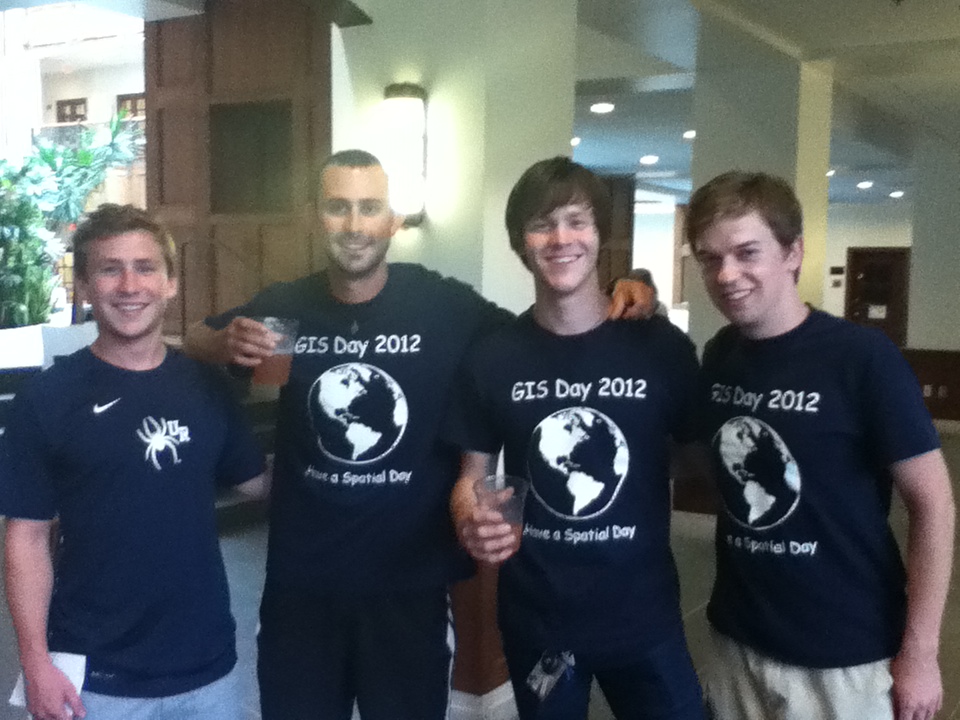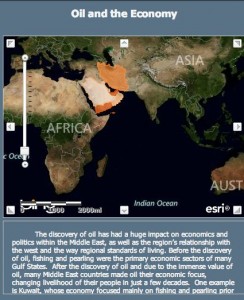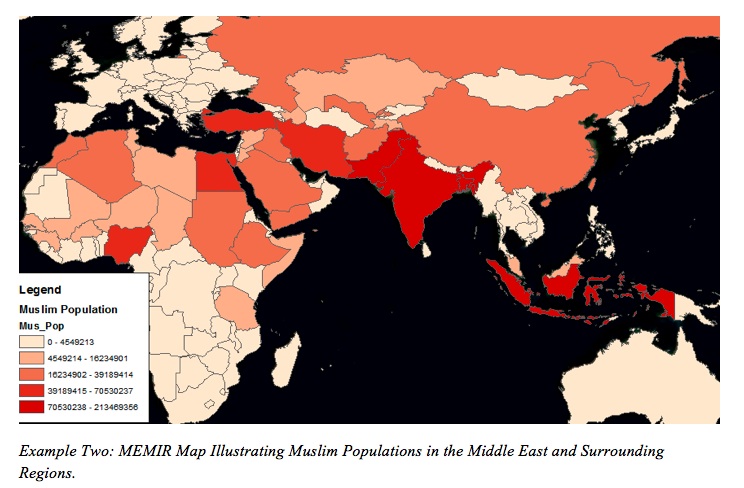 The Spatial Analysis Lab is excited to host our seventh-annual GIS Day, this Wednesday, November 13, in the SAL from 10:00am to 5:00pm. We have detailed information about the event on our GIS Day page. In addition, you can find more information by following us on Twitter and attending the Facebook event.
The Spatial Analysis Lab is excited to host our seventh-annual GIS Day, this Wednesday, November 13, in the SAL from 10:00am to 5:00pm. We have detailed information about the event on our GIS Day page. In addition, you can find more information by following us on Twitter and attending the Facebook event.
For now, however, we want to give you a preview of all the exciting events that will take place this Wednesday, as well as some of the activities that will be happening all day long for our open house.
Events
For a full schedule of events, see the GIS Day page.
- Guest speakers: Highlights include talks from four UR alumni, current professors, and current students.
- Our annual geography-themed cake contest! Submit a cake (or any other similar baked goods) to the Spatial Analysis lab by noon on Wednesday. The cakes will be judged based on originality and connection to geography and/or GIS. Prizes are available for the winners!
- Geography fun and games: Join us for lunch. Rumor is there will be a t-shirt giveaway, a Twitter quiz, and perhaps some other exciting games…
Other Activities
These will go throughout the day, so feel free to stop by the SAL from 10:00am through 5:00pm, sit down at one of our computers, and have fun!
- “Ask a GIS Expert”: If you have any GIS-related question, our team of professors, staff, and interns will be on hand to help. There’s no question too big or too small that they won’t answer. This is also a perfect way to learn about the GIS capabilities at UR, the data sets we already have, and how you can use GIS in your classes, work, or research.
- Hands-on GIS for Desktop: Esri, the company that creates the ArcGIS products and sponsors the international GIS Day, has generously supplied some pre-made lessons that guide you through a real-life GIS analysis! This is a great way to learn about GIS, and no prior experience is required. All you have to do is follow easy, step-by-step instructions. The lessons include determining appropriate lynx habitat sites and mapping major features on the surface of Mars.
- Hands-on GIS Online: Esri has also prepared some fun geo treasure hunts. Use your geographic knowledge to answer a series of questions about major world cities or about mountain ranges, and collect a prize at the end! These interactive treasure hunts showcase web maps from ArcGIS Online.
- Make Your Own Map: It’s really easy to use ArcGIS Online to create a simple, interactive web map. Follow our easy, step-by-step instructions to create your own map!
- Mapman Comic Book: GIS Day is fun for all ages! We’ll print you a copy of the Mapman comic book, the only superhero to use geospatial knowledge to save the world! Or at least, to help children sell more lemonade. Have fun learning about GIS while coloring in pictures from this exciting adventure!
- Certificate of Participation: We know that GIS Day is a big deal, so there’s no better way to commemorate it than with a personalized Certificate of Participation! Just write your name and contact information down on the list, and we will send you the certificate with your name.
We look forward to seeing you on Wednesday for GIS Day!



